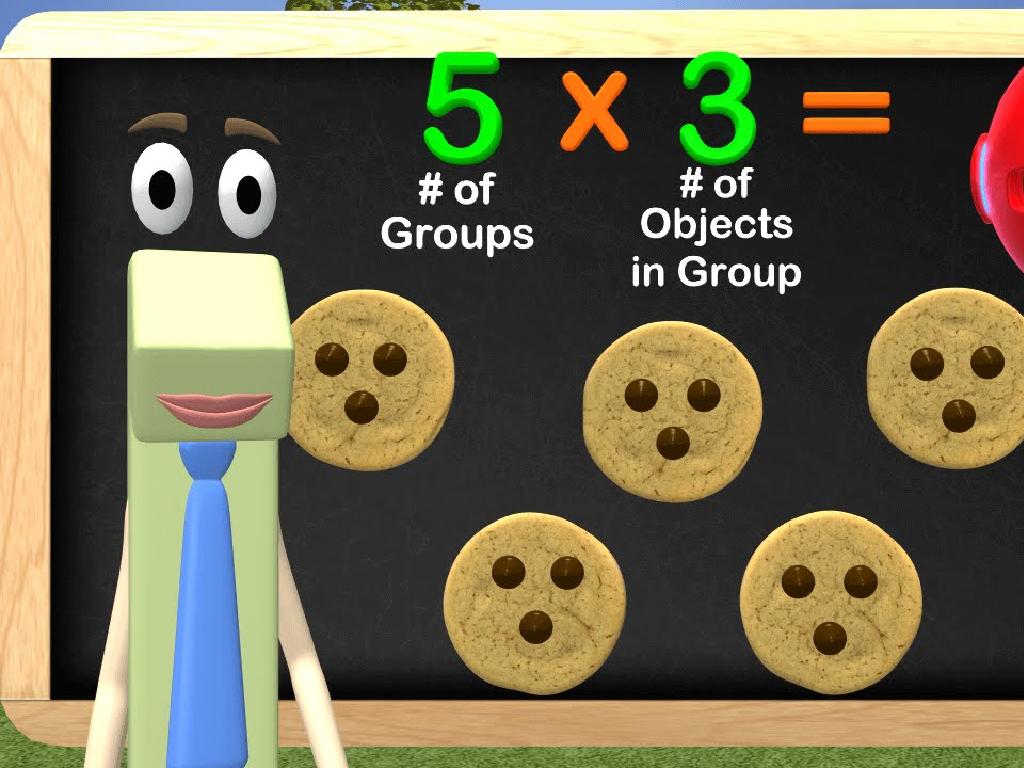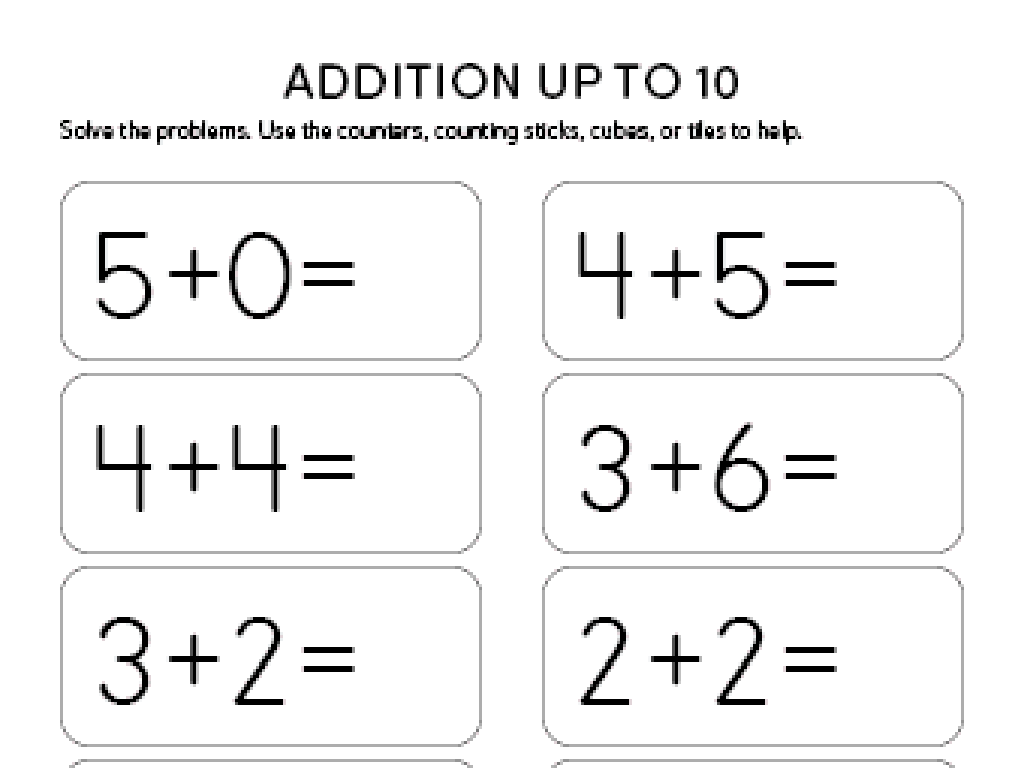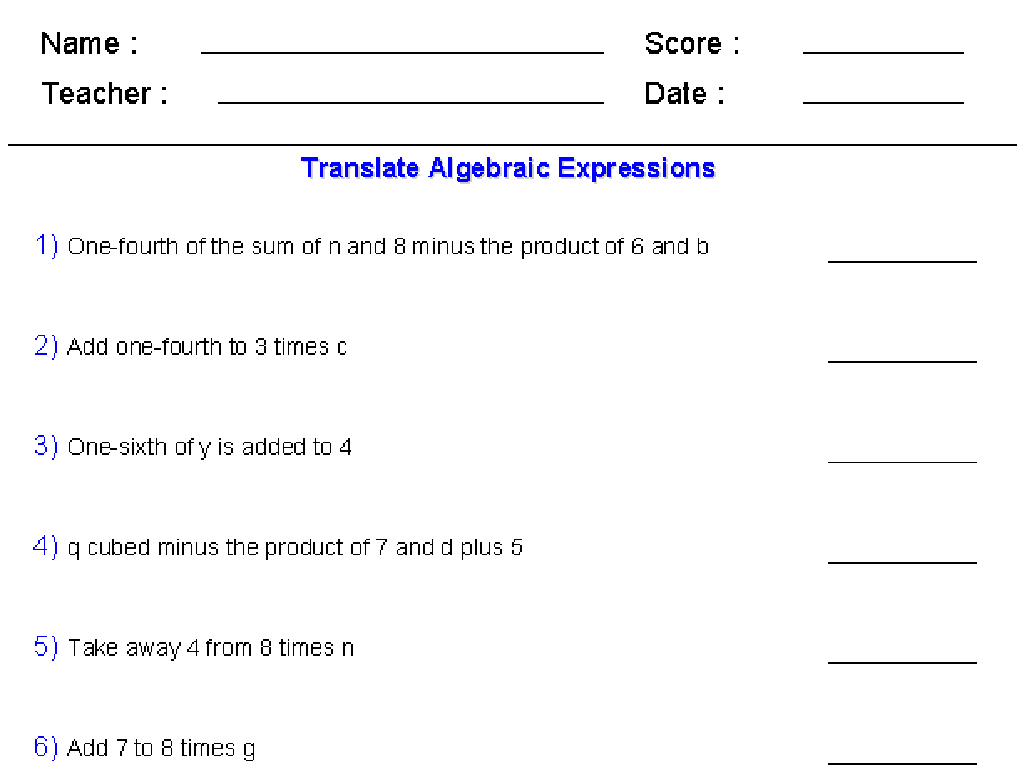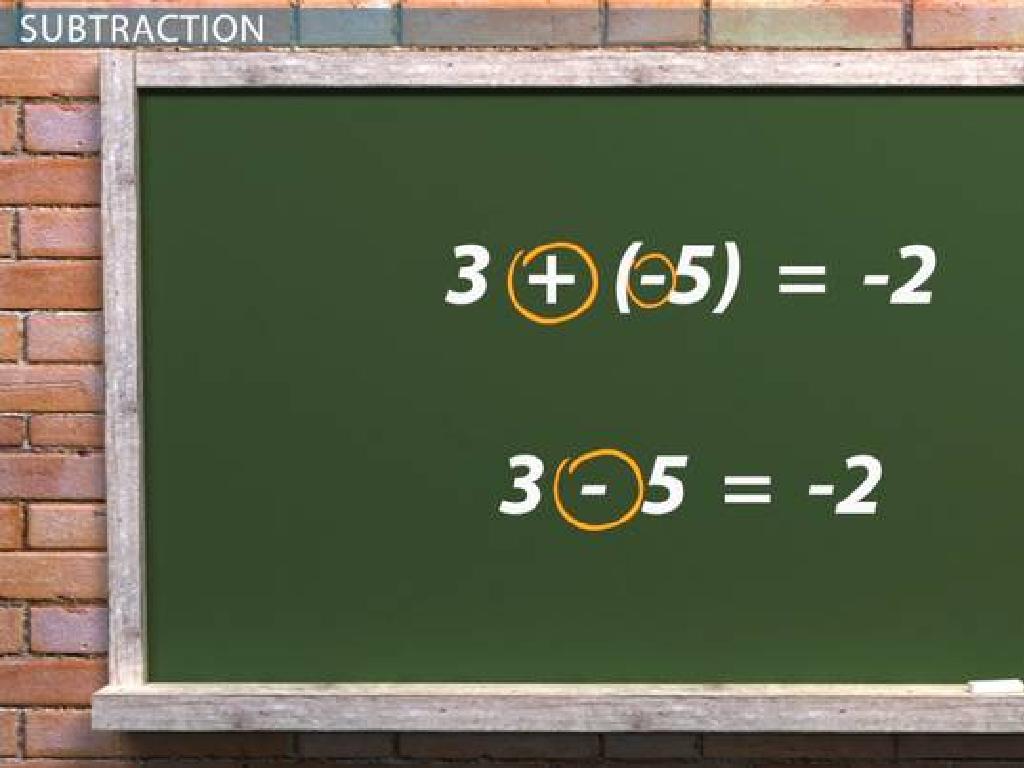Subtraction Sentences Up To 10 - What Does The Cube Train Show?
Subject: Math
Grade: Pre-k
Topic: Subtraction Up To 10
Please LOG IN to download the presentation. Access is available to registered users only.
View More Content
Welcome to Subtraction!
– Subtraction means taking away
– Like when we eat cookies from a plate
– It helps us count what’s left
– If we have 5 toys and give away 2, how many do we have now?
– We use subtraction in daily life
– When we share snacks or when we put toys away
– Let’s practice with cube trains
– Cube trains show us subtraction by removing cubes
|
This slide introduces the concept of subtraction to Pre-K students in a fun and relatable way. Start by explaining subtraction as ‘taking away’ using examples like eating cookies from a plate or giving some toys to a friend. Emphasize that subtraction helps us figure out how many items we have left after some are taken away. Use real-life scenarios to illustrate the use of subtraction, such as sharing snacks or cleaning up toys. Finally, introduce cube trains as a visual and interactive tool to demonstrate subtraction by physically removing cubes and counting what remains. Encourage the children to participate by asking questions and providing examples from their own experiences.
Understanding Subtraction: The Cube Train
– Subtraction means taking away
– Find out how many are left
– If we have 10 blocks and remove 3, how many are left?
– Like eating cookies
– Start with 5 cookies, eat 2, how many left?
– Cube trains show subtraction
– We can remove cubes from a train to see subtraction
|
This slide introduces the concept of subtraction to Pre-K students using tangible examples they can relate to, like cookies. Subtraction is explained as the process of taking something away and then seeing what remains. Use a cube train as a visual aid to demonstrate subtraction by physically removing cubes and counting what’s left. Encourage students to think of subtraction in terms of their own experiences, such as when they eat some of their snacks and have fewer left. This real-world connection helps solidify the concept in young minds. During the lesson, engage the students with hands-on activities where they can practice subtracting items from a group and counting the remaining items.
Learning Subtraction: Cube Trains
– Subtraction sentences use –
– Example: 5 – 2 = 3
– Taking 2 cubes from 5 leaves 3
– ‘Difference’ is the answer
– The difference in 5 – 2 = 3 is 3
– Cube trains show subtraction
– Visualize removing cubes from a train
|
This slide introduces the concept of subtraction sentences to Pre-K students using cube trains as a visual aid. Start by explaining that subtraction sentences are made up of numbers and a minus sign, which indicates that something is being taken away. Use a simple example like 5 – 2 = 3 to show that if we take 2 away from 5, we are left with 3, which is called the ‘difference’. Use cube trains to visually demonstrate this concept by physically removing cubes and counting what is left. This hands-on approach helps young learners grasp the idea of subtraction in a tangible way. Encourage students to create their own cube trains and subtraction sentences during the activity.
Let’s Make a Cube Train!
– Cube trains show subtraction
– Build a train with blocks
– Use colorful blocks to make it fun
– Remove blocks to subtract
– Take away one block at a time
– Observe the train get shorter
|
This slide introduces a hands-on activity for Pre-K students to understand subtraction visually and physically through the use of a cube train. Start by explaining that a cube train can represent numbers and subtraction is like taking cubes away. Have the students build a train with a certain number of blocks, up to 10. Then, instruct them to remove blocks one by one, counting backwards each time they remove a block. This will help them see the train getting shorter and understand the concept of subtraction. Encourage the students to say the subtraction sentence out loud, for example, ’10 take away 1 is 9′. Prepare to assist students who may need help with counting or understanding the activity, and ensure that there are enough blocks for all students to participate.
Subtraction with Cube Trains
– Count starting cubes together
– Let’s count the cubes in our train before we take any away.
– Remove some cubes from the train
– We’ll take away 1 or 2 cubes – watch them go!
– Count the cubes left in the train
– After removing cubes, we count what’s left to see our new total.
– Understand subtraction concept
|
This slide is designed to introduce the concept of subtraction to Pre-K students using a hands-on approach with cube trains. Start by counting the number of cubes in the train with the students to ensure they understand the initial quantity. Then, demonstrate removing a few cubes and encourage the students to visualize the subtraction process. After cubes are removed, count the remaining cubes with the students to find the new total. This activity helps students grasp the concept of subtraction as ‘taking away’ in a tangible and engaging way. For the activity, prepare different sets of cube trains with varying numbers of cubes and ensure each student or group has a chance to practice subtracting and counting the remaining cubes.
Practice Time: Cube Train Subtraction!
– Observe the cube train closely
– Tell me the subtraction sentence
– If we start with 5 cubes and remove 2, what’s our subtraction sentence?
– Count the cubes with care
– Discover how many cubes remain
– After subtracting, we count what’s left to find the answer.
|
This slide is an interactive activity for students to practice subtraction with visual aids. Display a cube train with a certain number of cubes, then remove some and ask the students to create a subtraction sentence based on what they see. For example, if there are 5 cubes and you take away 2, the sentence is ‘5 – 2 = 3’. Encourage the students to count aloud the remaining cubes after each subtraction. This hands-on approach helps solidify their understanding of subtraction as ‘taking away’. Prepare several examples with different numbers of cubes to ensure all students can participate and understand the concept.
Subtraction Game with Cube Trains
– Let’s play a subtraction game!
– Use cube trains for the game
– Cube trains help us see subtraction
– Find the difference quickly
– Subtract numbers, count what’s left
– Who will be the subtraction star?
|
This slide introduces a fun and interactive subtraction game for Pre-K students using cube trains. The game is designed to help children visualize subtraction by physically removing cubes from a train. Set up different cube trains with up to 10 cubes and ask the children to subtract a certain number of cubes as quickly as they can. Monitor the students as they play and offer guidance if needed. Possible activities include timed challenges, team competitions, or individual puzzles. Encourage the children to count aloud as they play to reinforce their understanding of subtraction. Celebrate all attempts and successes to build confidence.
Class Activity: Build Your Own Cube Train
– Start with 10 cubes for your train
– Roll the dice to remove cubes
– What’s your subtraction sentence?
– If you roll a 4, take away 4 cubes. Now how many do you have?
– Share with the class!
|
This interactive class activity is designed to help Pre-K students understand subtraction in a hands-on way. Each student will build a train using 10 cubes, then roll a dice to determine how many cubes to remove, creating a visual representation of the subtraction process. After removing the cubes, they will form a subtraction sentence based on the action (e.g., ’10 – 4 = 6′). Encourage students to articulate their subtraction sentence to the class, reinforcing their understanding and ability to communicate mathematical concepts. For variation, students can take turns, or use different numbers of starting cubes to accommodate different skill levels. This activity promotes counting, number recognition, and the concept of taking away in subtraction.
Subtraction Success with Cube Trains!
– Celebrating subtraction skills
– Subtraction shows remaining cubes
– If we start with 10 cubes and take away 2, we have 8 cubes left.
– Practice makes perfect
– You’re becoming subtraction stars!
|
This slide is meant to congratulate the students on their hard work learning subtraction with cube trains. Emphasize that subtraction is a way to find out how many items are left after some are taken away. Encourage them to keep practicing with different numbers of cubes to become confident in their subtraction skills. Celebrate their progress and let them know that with continued practice, they will become subtraction stars. You can suggest playing subtraction games or creating their own cube trains at home to reinforce their learning.






